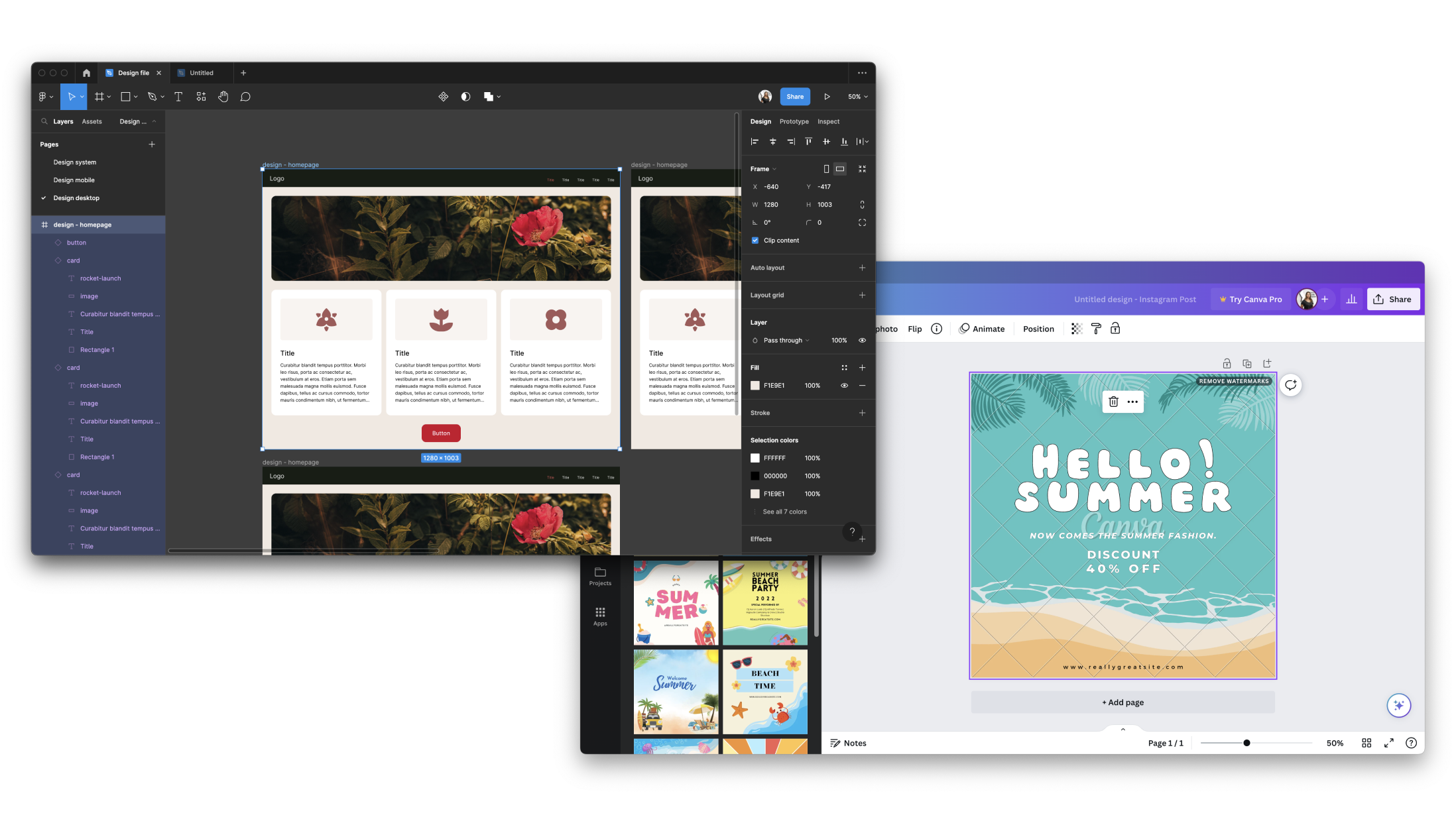A jungle of features: how do you fertilize it?
Many software vendors boast about the number of features they have compared to their competitors. However, when you ask them to explain which core problem they solve and how all these features contribute to it, they find it difficult to give an answer. This may be because all these individual features only solve pieces of different problems.
This feels contradictory. As a software vendor, you want to solve your customer's problems as efficiently and inexpensively as possible. Developing and maintaining a jungle of unnecessary features is anything but "efficient and inexpensive."

Of course, you don't create this jungle consciously. Often, the situation is preceded by such a process:
- You put a lot of work into your product, and after blood, sweat, and tears, you proudly show it to a new client.
- The client says, "Hmm, this isn't quite what we're looking for. What if you add this feature?"
- You add the feature. The client is satisfied. But then the next client comes with the same request but for a different feature.
- After dutifully adding a lot of features, you come across a client who asks for a feature again. However, this time you get a bit frustrated: you have to explain that the feature has already been added. They just couldn’t find it.
If you recognize this, I have bad news for you. Your chances of becoming a market leader are virtually zero. The customer no longer understands why they should come to you, and due to all the distractions, you have no time to optimize the core of your product. So the problem is clear, but how do you prevent this?
How do I know what to build and what not to build?
The solution to this problem is not simply to avoid adding features altogether. Some products simply require many features to be successful. For example, a Swiss Army knife may have many subpar features, but it provides one clear value: it is one compact tool for when you really need it.
The point is to understand who your primary audience is and what they need to achieve their goals. In the case of the Swiss Army knife, this would be a camper who doesn't want to lug around a toolbox. But how do you determine your customer's goals? You might have guessed it already: through the tried and true "problem-solution fit". We already know how to find this for new products. Here's a general plan to follow:
- Define the problem you want to solve in one sentence and investigate:
• How big is the problem in the market?
• Which groups in the market are experiencing this problem?
• Do I have the right materials and skills to solve this problem? - Investigate the possible audiences that are experiencing this problem by:
• Validating that they are actually experiencing the problem and actively seeking a solution;
• Researching how much they are willing to pay for a solution (and what type of solution);
• Investigating whether there are other stakeholders (with different interests) that you need to consider. - Demonstrate through experiments that your solution will solve the problem. Don't be too quick to change your concept unless you see a clear trend in your feedback. Validation can be done through, for example:
• Comparing click-through rates on variations of landing pages;
• Pitching to customers;
• Testing prototypes;
• Video ads. - Once you have a list of people who are truly willing to pay, build your first stripped-down version (your MVP). Of course, you should also validate this with your customers during and after the release.
- From now on, repeat steps 3 and 4 for every feature you want to add. You can improve the effectiveness of your current system through methods such as analytics, A/B tests, and interviews.

Figma and Canva largely have the same purpose: to enable the user to produce beautiful designs. The different target audiences (artists vs. hobbyists) only result in completely different programs: one with complete freedom and advanced features, and one with many templates and few features.
But I already have a product on the market...?
Do you already have a product on the market with many paying customers? Then the process described above may be a bit easier for you. You already have a valuable pool of stakeholders and existing software to test with. You just need to go through the steps again to discover what you should focus on. The difference is that:
- You can likely perform step 2 with your current customers. Note that if you have many different types of customers, you may not be able to satisfy all of them. But it can also mean that you can attract a larger group of your ideal customers with a simpler product;
- You can perform step 3 by presenting your existing product.
You may discover that the reason why your customers choose your product is due to just one small component that the competitors don’t have. So, when a customer comes to you with a request for a new feature, you can put it into perspective, by asking yourself:
- Does this feature fit into the value that our product needs to contribute?
- Does the request for this feature fit into a broader trend, or is it a nice-to-have for one specific customer?
- What is the likelihood that this feature will provide a good return on investment?
But what about my competitors?
If you have gone through all the steps above correctly, you probably don't have to worry too much about the competition. Why? Because you have discovered problems that your target audience apparently has not found a solution for yet. Not even with your competitors. That being said, it doesn't hurt to look at the market. For example, it may be that:
- The competitor's product is too expensive;
- The valuable feature is drowned out by other features in their product;
- They have not tapped into the right marketing channels;
- Their implementation is far from optimal (for example, because they focus on too many other things).
In other words, the validation process applies (perhaps unfortunately) not only to your product, but also to the price, marketing, and implementation.
So to summarize:
To truly understand which features are essential within your product, you need to clearly know what problem you are solving, who your target audience is, and what they expect as a solution to the problem. This is a continuous process in which you keep iterating, experimenting, and validating. Every new innovation is based on data from your customers. The advantage is that it can lead to some really cool insights and creative ideas that you had never thought of before!


 Joris Laenen
Joris Laenen


 Martijn Imhoff
Martijn Imhoff
 Bas de Vaan
Bas de Vaan
 Katja van Weert
Katja van Weert


